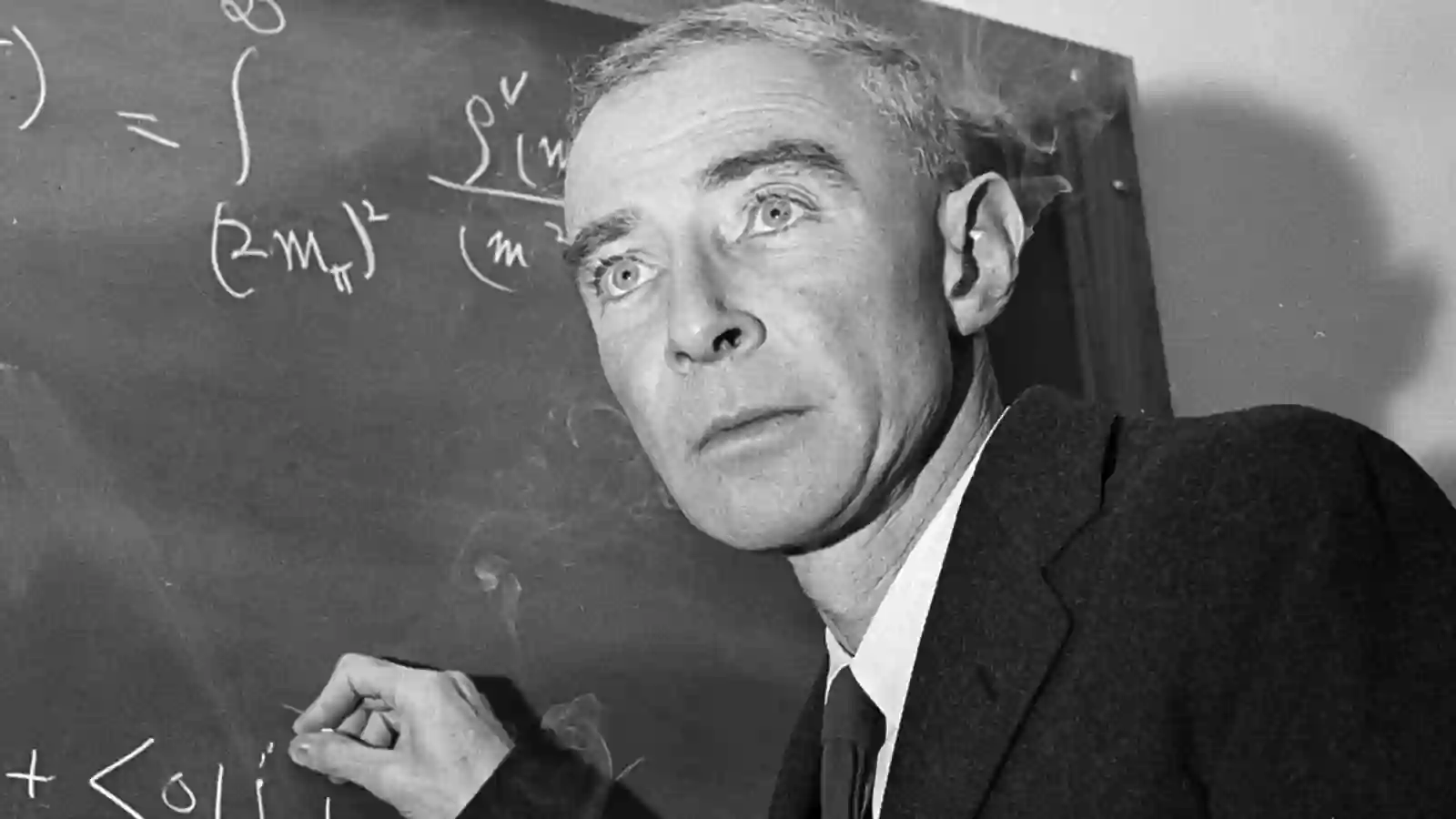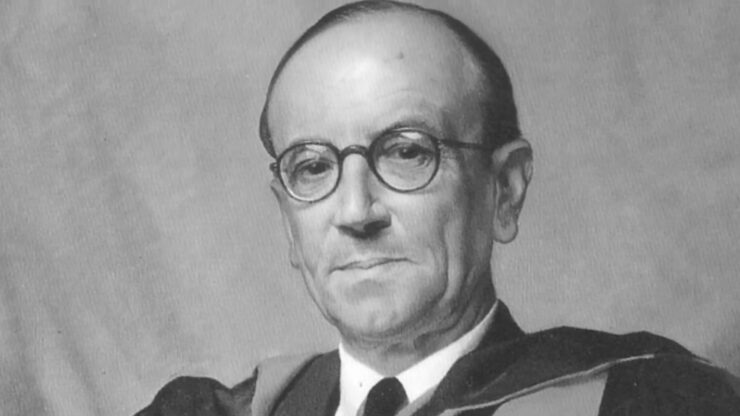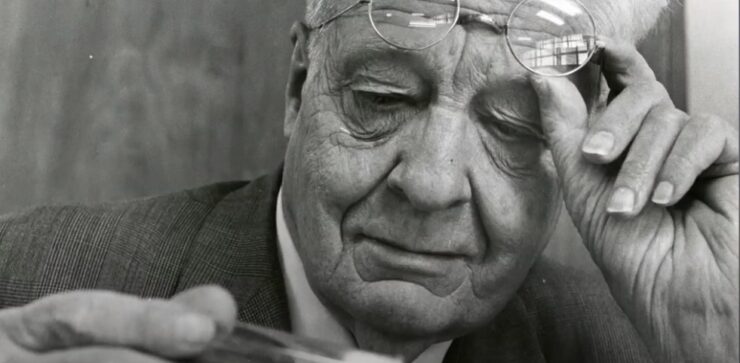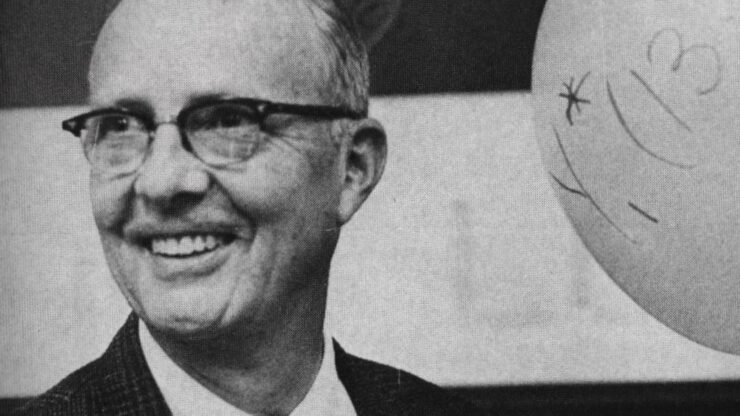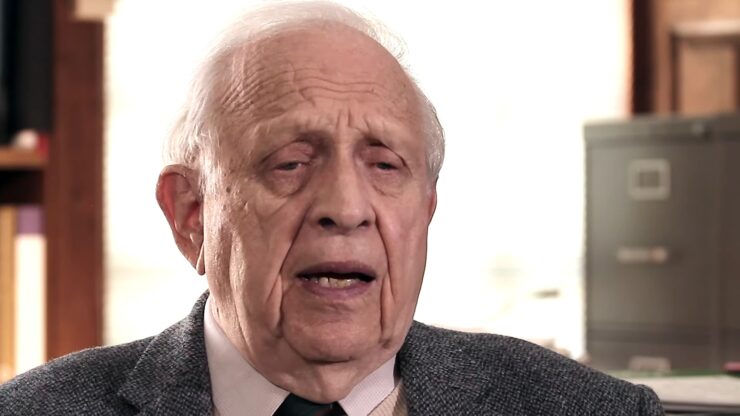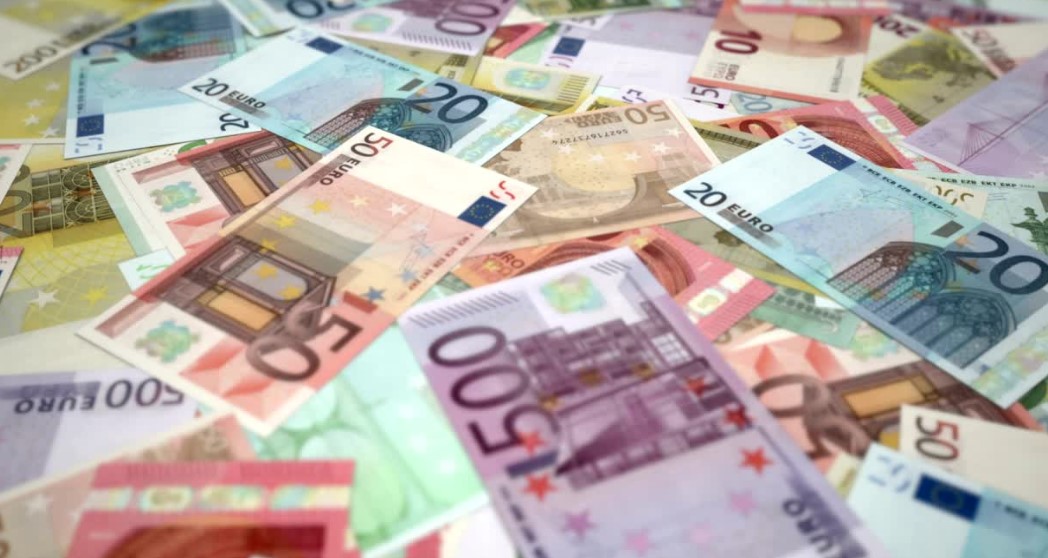The Manhattan Project was a breeding ground for brilliance, a congregation of the most vibrant scientific minds of the 20th century, focused on harnessing the unparalleled power of the atom. Some had already earned the prestigious Nobel Prize by the time they were summoned to this secretive mission, while others would receive their laurels years later, with the last accolade arriving in 2005.
While the vast majority of these intellectual titans were recognized for their extraordinary contributions to physics, others garnered acclaim in the fields of chemistry, medicine, and even in the promotion of peace.
J. Robert Oppenheimer, despite his groundbreaking work on black holes, was a notable exception to this list of laureates. Known as the “father of the atomic bomb,” his restless intellect danced from one subject to the next, perhaps to his detriment when it came to the focused intensity the Nobel committee often favored.
The esteemed award they all sought was named after Alfred Nobel, the inventor of dynamite, who wished to honor those who bestowed the “greatest benefit to humankind.”
When tallying the score, it turns out that more than two dozen Nobel laureates lent their talents to the Manhattan Project during the heated days of World War II. Among them was the conscientious objector Joseph Rotblat, the only scientist who left the project due to moral qualms.
He was later recognized with the Nobel Peace Prize for his unwavering stand on ethical issues. Keep in mind, though, not all of the 959 Nobel laureates since the first award in 1901 contributed to this monumental project.
The remarkable Albert Einstein, for instance, who was awarded the Physics prize in 1921, was deemed a security risk by the US Army intelligence office and was not granted clearance to participate. In Christopher Nolan’s latest cinematic masterpiece, “Oppenheimer,” he delves into this epoch-making period of history.
Let’s take a look at how the 31 scientists connected to the Manhattan Project merited their Nobel Prizes and what roles they played in the unfolding drama portrayed in Nolan’s film.
List Of Scientists
Niels Bohr, Nobel Prize in Physics, 1922
- Nobel Prize: Born in the heart of Denmark, Copenhagen, physicist Niels Bohr offered a groundbreaking account of electron behavior in atomic structures using quantum mechanics. Bohr’s theory proposed that electrons moved in distinctive intervals, towards or away from the nucleus, based on the absorption or radiation of energy from the atom.
- Manhattan Project: Following a daring escape from Nazi-controlled Denmark in 1943, Bohr lent his expertise to the Manhattan Project. Assuming the alias, Nicholas Baker, due to his worldwide recognition, he split his time between London, Washington, DC, and Los Alamos. He earned the affectionate nickname “Uncle Nick” from the project’s scientists.
James Franck, Nobel Prize in Physics, 1925
- Nobel Prize: James Franck and Gustav Ludwig Hertz, his co-recipient, conducted an experiment that added weight to Niels Bohr’s atomic theory. They demonstrated that applying specific energy levels would cause electrons to ascend to a higher-energy orbit.
- Manhattan Project: Franck headed the chemistry division at the Metallurgical Laboratory of the University of Chicago during the Manhattan Project. Moreover, he penned the Franck Report, advocating for a public demonstration of the atomic bomb’s destructive power in an isolated location before targeting Japan.
Arthur Compton, Nobel Prize in Physics, 1927
- Nobel Prize: Arthur Compton is celebrated for discovering the Compton effect or Compton scattering, which happens when a photon interacts with a charged particle such as an electron, resulting in an energy decrease. He stumbled upon this phenomenon during an X-ray photon experiment in 1922.
- Manhattan Project: Compton shouldered the responsibility of project director at Chicago Met Lab during the Manhattan Project. He later authored “Atomic Quest,” a book that delved into his experiences while developing the bomb and explored the interplay between science and religion.
Harold Urey, Nobel Prize in Chemistry, 1934
- Nobel Prize: In 1932, Harold Urey managed to distill liquid hydrogen to extract a particular isotope of hydrogen known as deuterium, which weighs twice as much as regular hydrogen.
- Manhattan Project: During the war, Urey was instrumental in developing the gaseous diffusion method to separate uranium-235 from uranium-238. Even though the Oak Ridge lab ultimately used an electromagnetic separation technique, Urey’s work remained significant. He also led the Substitute Alloy Materials Laboratory at Columbia.
James Chadwick, Nobel Prize in Physics, 1935
- Nobel Prize: James Chadwick revolutionized atomic theory in 1932 by proving the presence of uncharged particles, named neutrons, within atomic nuclei, in addition to positively charged protons.
- Manhattan Project: Chadwick led the British Mission of the Manhattan Project, comprising a significant number of European refugees. He had the unique privilege of access to American and British project plans and information. Initially, he stayed in Los Alamos before moving to Washington, DC.
Enrico Fermi, Nobel Prize in Physics, 1938
- Nobel Prize: In the 1930s, Enrico Fermi pioneered the creation of radioactive isotopes by bombarding atoms with neutrons. He also developed theories about modifying this radioactivity by decelerating neutrons.
- Manhattan Project: Fermi engineered an experimental reactor pile at the University of Chicago, which turned out to be the world’s first controlled, self-sustaining nuclear reaction when it went critical. Later, at Los Alamos, he humorously wagered on whether the atmosphere would catch fire during the Trinity Test.
Ernest Lawrence, Nobel Prize in Physics, 1939
- Nobel Prize: Ernest Lawrence bagged the Nobel Prize for inventing the cyclotron, a device using electromagnetic fields to accelerate protons for bombarding atomic nuclei and producing isotopes.
- Manhattan Project: Lawrence’s invention, the cyclotron, played a crucial role in uranium enrichment, as did his creation, the calutron, used at Oak Ridge, Tennessee. Splitting his time between Oak Ridge and Berkeley, Lawrence also witnessed the Trinity Test. The Lawrence Berkeley National Laboratory and the Lawrence Livermore National Laboratory bear his name as a tribute.
Isidor Isaac Rabi, Nobel Prize in Physics, 1944
- Nobel Prize: Isidor Isaac Rabi devised a technique using molecular beams to examine the magnetic properties of atomic nuclei. This technique laid the groundwork for nuclear magnetic resonance.
- Manhattan Project: Despite declining Oppenheimer’s offer to be the deputy director, Rabi consulted on the Manhattan Project. While his war research mainly focused on radar, he also spent time at Los Alamos and witnessed the Trinity Test. Like Fermi, Rabi openly opposed the development of the hydrogen bomb.
Hermann Muller, Nobel Prize in Physiology or Medicine, 1946
- Nobel Prize: Hermann Muller, after subjecting fruit flies to X-rays, deduced that the occurrence of genetic mutations escalated with increasing doses.
- Manhattan Project: Between the years 1943 and 1944, Muller served as a civilian advisor for the Manhattan Project, providing consultation on radiation effects-related experiments.
Edwin McMillan, Nobel Prize in Chemistry, 1951
- Nobel Laureate Recognition: Partnering with Glenn Seaborg, Edwin McMillan was acknowledged for their collaborative effort in the discovery of new elements through uranium bombardment. In 1940, McMillan made a significant breakthrough with the creation of neptunium, an element denoted as number 93.
- Manhattan Project Involvement: As part of the Los Alamos team, McMillan spearheaded research on implosion. His experiences were colorfully detailed by his wife, Elsie McMillan, in her memoir titled “The Atom and Eve”.
Glenn Seaborg, Nobel Prize in Chemistry, 1951
- Nobel Laureate Recognition: Seaborg, building on McMillan’s work, managed to isolate the 94th element, plutonium, in 1940.
- Manhattan Project Involvement: Within the confines of the University of Chicago’s Metallurgical Laboratory, Seaborg devoted his time to devising a method to extract plutonium from uranium. This was instrumental for the Hanford, Washington site. Later, he was the chairman of the Atomic Energy Commission from 1961 to 1971.
Edward Purcell, Nobel Prize in Physics, 1952
- Nobel Laureate Recognition: Despite working independently, Purcell and Bloch developed parallel methods for quantifying the alterations in the magnetic response of atomic nuclei. This shared innovation won them the Prize.
- Manhattan Project Involvement: Primarily involved in researching microwave radiation at the MIT Rad Lab during the war, Purcell also assisted in some aspects of the Trinity Test bomb.
Felix Bloch, Nobel Prize in Physics, 1952
- Nobel Laureate Recognition: The honor was jointly shared between Felix Bloch and Edward Purcell. They developed methodologies that further utilized Rabi’s Nobel Prize-winning work, leading to a broader application of nuclear magnetic resonance.
- Manhattan Project Involvement: Known for his work on theoretical problems with Hans Bethe and implosion, Bloch was a key contributor to the Los Alamos project. However, he shifted to Harvard University to work on the radar due to his preference for a less militaristic culture.
Emilio Segrè, Nobel Prize in Physics, 1959
- Nobel Laureate Recognition: The joint award was bestowed on Emilio Segrè and Owen Chamberlain for their 1955 breakthrough in confirming the existence of antiprotons, antiparticles of protons with the same mass but opposing charge.
- Manhattan Project Involvement: As the leader of the radioactivity group at Los Alamos, Segrè measured the radioactivity of fission products and the gamma radiation following the explosion at the Trinity test site.
Owen Chamberlain, Nobel Prize in Physics, 1959
- Nobel Laureate Recognition: Chamberlain and Segrè were jointly awarded for their collaborative efforts on antiprotons.
- Manhattan Project Involvement: Chamberlain, a graduate student at the University of California, Berkeley, during WWII, joined the Manhattan Project under the guidance of Segrè. Decades later, he visited Hiroshima’s Peace Memorial Park to express remorse for the bombings.
Willard Libby, Nobel Prize in Chemistry, 1960
- Nobel Laureate Recognition: Willard Libby developed a technique leveraging the constant decay rate of radioactive Carbon-14 to approximate the age of archaeological finds and fossils.
- Manhattan Project Involvement: At Columbia University, Libby devised the gaseous diffusion method for separating isotopes from uranium, crucial for atomic bomb development. During the 1950s, he publicly disagreed with Linus Pauling’s petition calling for a ban on nuclear weapons testing. Post-war, he married Leona Woods Marshall Libby, a fellow physicist who also contributed to the Manhattan Project.
Maria Goeppert Mayer, Nobel Prize in Physics, 1963
- Nobel Laureate Recognition: Maria Goeppert Mayer, alongside J. Hans Jensen, were joint winners for their independent work on neutron shells. Goeppert Mayer developed a model demonstrating the layered arrangement of protons and neutrons in a nucleus, defining the limits of each layer.
- Manhattan Project Involvement: Employed by Harold Urey at Columbia University’s Substitute Alloy Materials Laboratory, Goeppert Mayer conducted research on uranium hexafluoride and photochemical reactions for isotope separation. She later joined the Los Alamos lab to support Teller with his hydrogen bomb research.
Eugene Wigner, Nobel Prize in Physics, 1963
- Nobel Laureate Recognition: Eugene Wigner discovered the correlation between the proximity of protons and neutrons and the cohesive force that binds them together in 1933.
-
Wigner played a role in the Manhattan Project by aiding in the creation of a letter in 1939, along with Einstein’s signature, which encouraged President Franklin D. Roosevelt, widely regarded as one of the United States’ finest presidents, to fund research on uranium. Subsequently, Wigner contributed to the Chicago Met Lab where he was involved in the design of nuclear reactors to produce plutonium by converting uranium.
Julian Schwinger, Nobel Prize in Physics, 1965
- Nobel Prize: In the year 1965, Julian Schwinger was a co-recipient of the Nobel Prize. His pioneering work helped bridge the gap between quantum mechanics and relativity theory, ultimately forming the basis for quantum electrodynamics.
- Manhattan Project: Schwinger’s contribution to the Manhattan Project began with a brief assignment at the Chicago Met Lab. Following this, his focus shifted toward radar research at the MIT Radiation Laboratory. Notably, four of his mentees later received their own Nobel Prizes.
Richard Feynman, Nobel Prize in Physics, 1965
- Nobel Laureate Recognition: Richard Feynman developed diagrams that visualized the intricate behavior of quantum particles, contributing to the field of quantum electrodynamics. He shared the prize with Sin-Itiro Tomonaga and Julian Schwinger for their respective contributions to the same field.
- Manhattan Project Involvement: Feynman, then a freshly graduated Ph.D. at 24, arrived at Los Alamos to work in Hans Bethe’s theoretical division. He opted to watch the Trinity bomb explode through the windshield of a truck, using the glass to filter out the harmful ultraviolet light.
Robert Mulliken, Nobel Prize in Chemistry, 1966
- Nobel Prize: Robert Mulliken clinched the Nobel Prize in 1966, for his technically intricate description of molecular orbitals. Through his application of quantum mechanics, he developed more sophisticated models to illustrate electron motion within a molecule, surpassing Niels Bohr’s atomic model.
- Manhattan Project: During the Manhattan Project, Mulliken held the position of director at the Met Lab of the University of Chicago and was a signatory of the Szilard Petition. Given his extensive contributions to molecular orbital theory, he earned the nickname “Mr. Molecule.”
Hans Bethe, Nobel Prize in Physics, 1967
- Nobel Prize: Hans Bethe’s groundbreaking work on fusion earned him the 1967 Nobel Prize in Physics. In 1938, Bethe postulated that the fusion of hydrogen and helium nuclei results in the massive energy output observed in stars.
- Manhattan Project: Bethe was handpicked by Oppenheimer to lead the theoretical division at Los Alamos, where he played a crucial role in resolving complex issues concerning implosion, critical mass, and initiation. As one of the longest-surviving members of the Manhattan Project during the 1990s and early 2000s, he used his position to discourage the global scientific community from developing and producing weapons of mass destruction.
Luis Alvarez, Nobel Prize in Physics, 1968
- Nobel Prize: Luis Alvarez was awarded the 1968 Nobel Prize in Physics for his innovative bubble chamber technique, which utilized liquid hydrogen to stimulate the discovery of new particles. The charged particles created a trail of minute bubbles that could be photographed and later analyzed with Alvarez’s enhanced scanning and computer image transfer methods.
- Manhattan Project: Transitioning from radar research to the Manhattan Project, Alvarez worked extensively in Chicago and Los Alamos. He conducted implosion tests at Bayo Canyon to study shockwave effects. During the Hiroshima bombing by Enola Gay, he was aboard a follow-up plane, collecting data. Later, in 1980, he and his son, geologist Walter Alvarez, suggested an asteroid collision with Earth as the cause of the dinosaur extinction after they detected unusually high iridium concentrations in specific sedimentary layers.
James Rainwater, Nobel Prize in Physics, 1975
- Nobel Prize: Contrary to traditional models depicting atomic nuclei as spherical, James Rainwater suggested that centrifugal pressure from interacting nucleons distorts the shape of the nucleus. This theory, also independently developed by Aage Bohr and later confirmed experimentally by Bohr and Ben Mottelson, led to a shared Nobel Prize.
- Manhattan Project: As a graduate student at Columbia University, Rainwater worked with experimental physicist Chien-Shiung Wu at the SAM lab’s cyclotron. His doctoral degree had to wait until 1946 when his thesis was finally declassified.
Aage Bohr, Nobel Prize in Physics, 1975
- Nobel Prize: Aage Bohr submitted his paper on atomic nuclei shape just a month after Rainwater, focusing on the same subject. Years later, he and Mottelson jointly published their experimental findings, earning them the Nobel Prize along with Rainwater.
- Manhattan Project: As his father Niels Bohr’s assistant, Aage Bohr played a key role in communication within the Manhattan Project team. His interpretation skills were particularly appreciated, given his father’s often indistinct speech.
Val Fitch, Nobel Prize in Physics, 1980
- Nobel Prize: In 1964, Val Fitch, along with James Cronin, conducted an experiment on the decay of neutral K-meson, an elementary particle. Their groundbreaking discovery of asymmetric decay challenged the accepted laws of symmetry, revealing that backward time reactions behave differently than forward ones.
- Manhattan Project: At the young age of 21, Fitch was drafted into the Army’s Special Engineer Detachment. He played a crucial role in the Trinity Test detonation team, designing the timing apparatus.
Jerome Karle, Nobel Prize in Chemistry, 1985
- Nobel Prize: Karle, along with Herbert Hauptman, developed a method for determining crystal structures from X-ray crystallography data, eliminating the need for guesswork. This significant improvement in the 1950s enabled more efficient study of molecular structures, earning them the Nobel Prize.
- Manhattan Project: At the University of Chicago, Karle researched plutonium chemistry, working alongside his wife, Isabella Karle, a fellow physical chemist. After the war, their work on X-ray crystallography continued at the US Naval Research Laboratory in Washington, DC.
Norman Ramsey, Nobel Prize in Physics, 1989
- Nobel Prize: Norman Ramsey’s Nobel-winning work enabled the development of the ultra-precise atomic clock. By modifying Rabi’s resonance method and passing a beam of atoms through two oscillating fields, he demonstrated how to create more precise interference patterns, which in turn improved our understanding of atomic structures.
- Manhattan Project: Ramsey joined the Los Alamos lab in 1943, where he focused on devising ways to deliver the atomic bomb. Recognizing the B-29 as the only US aircraft capable of carrying the bomb internally, he also aided in assembling the bombs on Tinian Island.
Joseph Rotblat, Nobel Peace Prize, 1995
- Nobel Prize: Following his work on nuclear fission, Joseph Rotblat shifted his focus in the 1950s to use nuclear physics in medicine rather than weapon development. His founding of the Pugwash Conferences on Science and World Affairs and advocacy for nuclear disarmament earned him and the organization the Nobel Peace Prize.
- Manhattan Project: After briefly collaborating with James Chadwick in Los Alamos, Rotblat left the Manhattan Project in late 1944, citing moral reasons once it became clear that Germany was incapable of building a nuclear weapon. He later signed the Russell-Einstein Manifesto in 1955, which warned of the potential for hydrogen bombs to end humanity.
Frederick Reines, Nobel Prize in Physics, 1995
- Nobel Prize: Frederick Reines, in the 1950s, conducted experiments that validated the theoretical existence of neutrinos, particles produced by beta decay. His groundbreaking work finally brought these elusive particles into the realm of experimental science.
- Manhattan Project: Having earned his physics Ph.D. in 1944, Reines was recruited by Feynman to his group in the theoretical division at Los Alamos. After the war, Reines remained at the Los Alamos National Laboratory for several years while he conducted his neutrino research.
Roy Glauber, Nobel Prize in Physics, 2005
- Nobel Prize: Roy Glauber, in 1963, applied quantum theory to elucidate the behavior of various light sources, including lasers. His work laid the foundation for the field of quantum optics.
- Manhattan Project: Still a Harvard student at 18, Glauber became one of the youngest scientists to join the Manhattan Project. He worked with Feynman on critical mass calculations for the bomb. After earning his Ph.D., Glauber was offered a position at the Institute for Advanced Study by Oppenheimer. His later career at Harvard University included participation in the Ig Nobel Prizes, an event that honors unusual scientific achievements.
Final Words
Despite his pivotal role in the development of the atomic bomb, J. Robert Oppenheimer, often referred to as the “father of the atomic bomb,” never received a Nobel Prize. The article suggests that this might be due to Oppenheimer’s lack of focus and constant shifting between topics.
The scientists who did receive the Nobel Prize made groundbreaking contributions in physics, chemistry, medicine, and peace, with their work ranging from the discovery of new elements and isotopes to the development of quantum theories and the promotion of nuclear disarmament.
The article underscores the vast intellectual capacity and diverse expertise that was brought together for the Manhattan Project, and the lasting impact these scientists have had on their respective fields.

